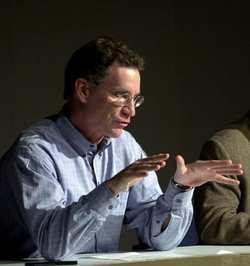Sun, Feb 01, 2004
Advertisement
More News
 ANN's Daily Aero-Term (07.26.25): Downburst
ANN's Daily Aero-Term (07.26.25): Downburst
Downburst A strong downdraft which induces an outburst of damaging winds on or near the ground. Damaging winds, either straight or curved, are highly divergent. The sizes of downbu>[...]
 ANN's Daily Aero-Linx (07.26.25)
ANN's Daily Aero-Linx (07.26.25)
Aero Linx: Air Charter Safety Foundation (ACSF) The Air Charter Safety Foundation is a 501c3 non-profit organization. Founded in 2008, our mission is to lead and support the advanc>[...]
 Classic Aero-TV: The Bizarre Universe of Klyde Morris Cartoons
Classic Aero-TV: The Bizarre Universe of Klyde Morris Cartoons
From 2023 (YouTube Edition): Putting the ANT in Antihero A Beech Starship speeds along at altitude. “Deflectors on!” a voice from within the aircraft cries. “Look>[...]
 ANN's Daily Aero-Term (07.27.25): Estimated (EST)
ANN's Daily Aero-Term (07.27.25): Estimated (EST)
Estimated (EST) -When used in NOTAMs “EST” is a contraction that is used by the issuing authority only when the condition is expected to return to service prior to the >[...]
 ANN's Daily Aero-Linx (07.27.25)
ANN's Daily Aero-Linx (07.27.25)
Aero Linx: Regional Airline Association (RAA) Regional airlines provide critical links connecting communities throughout North America to the national and international air transpo>[...]
blog comments powered by Disqus





